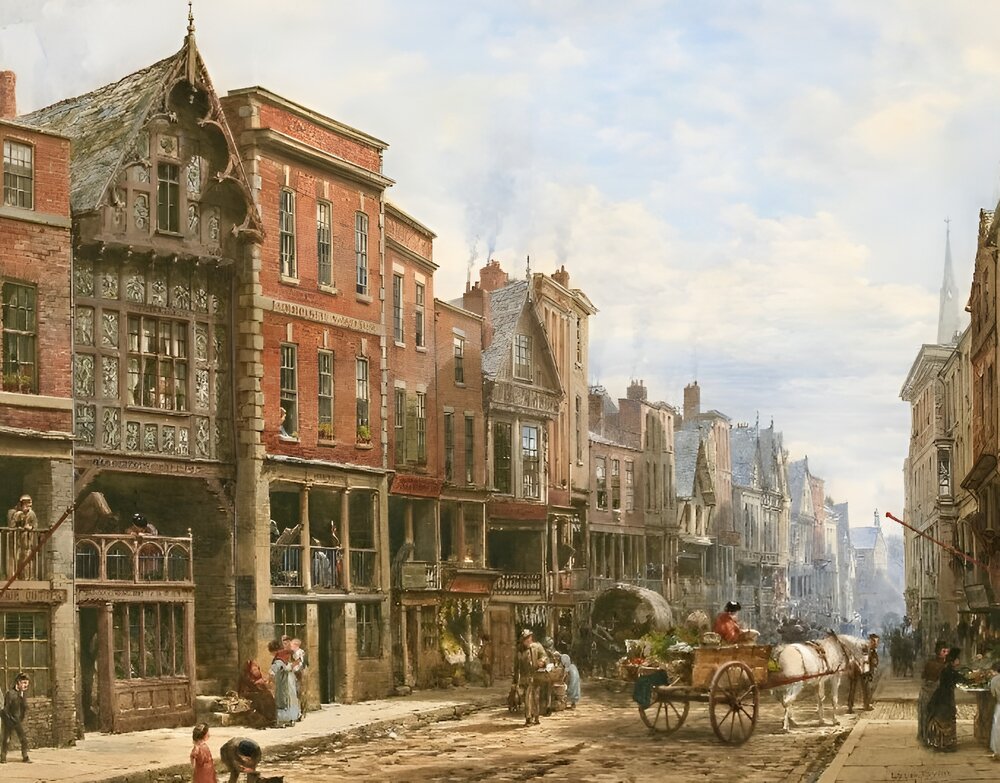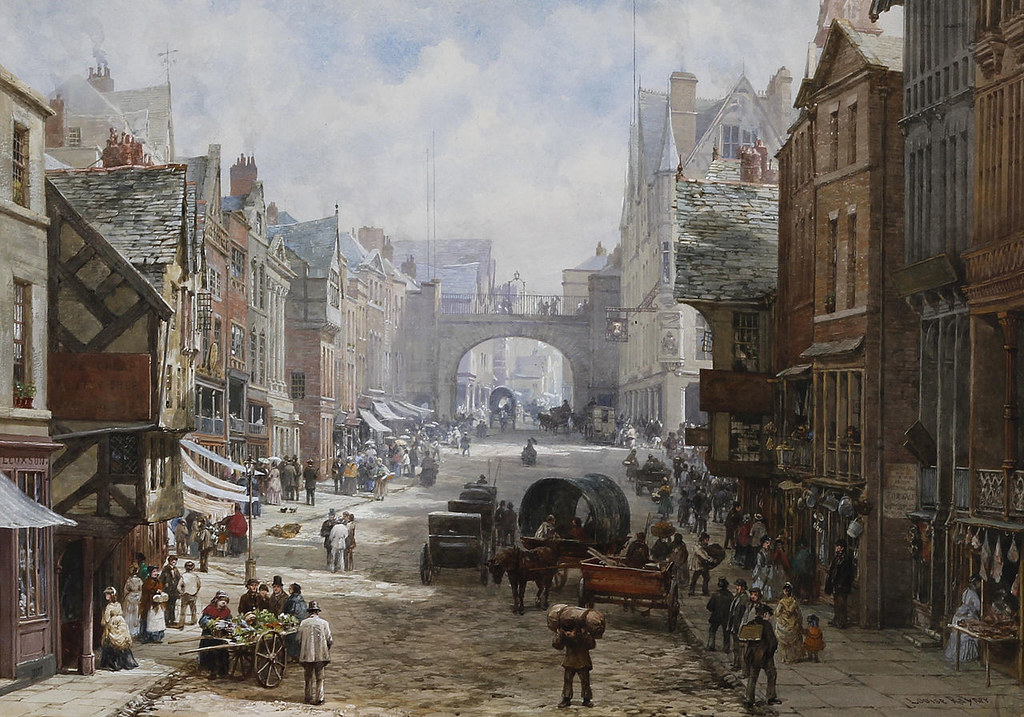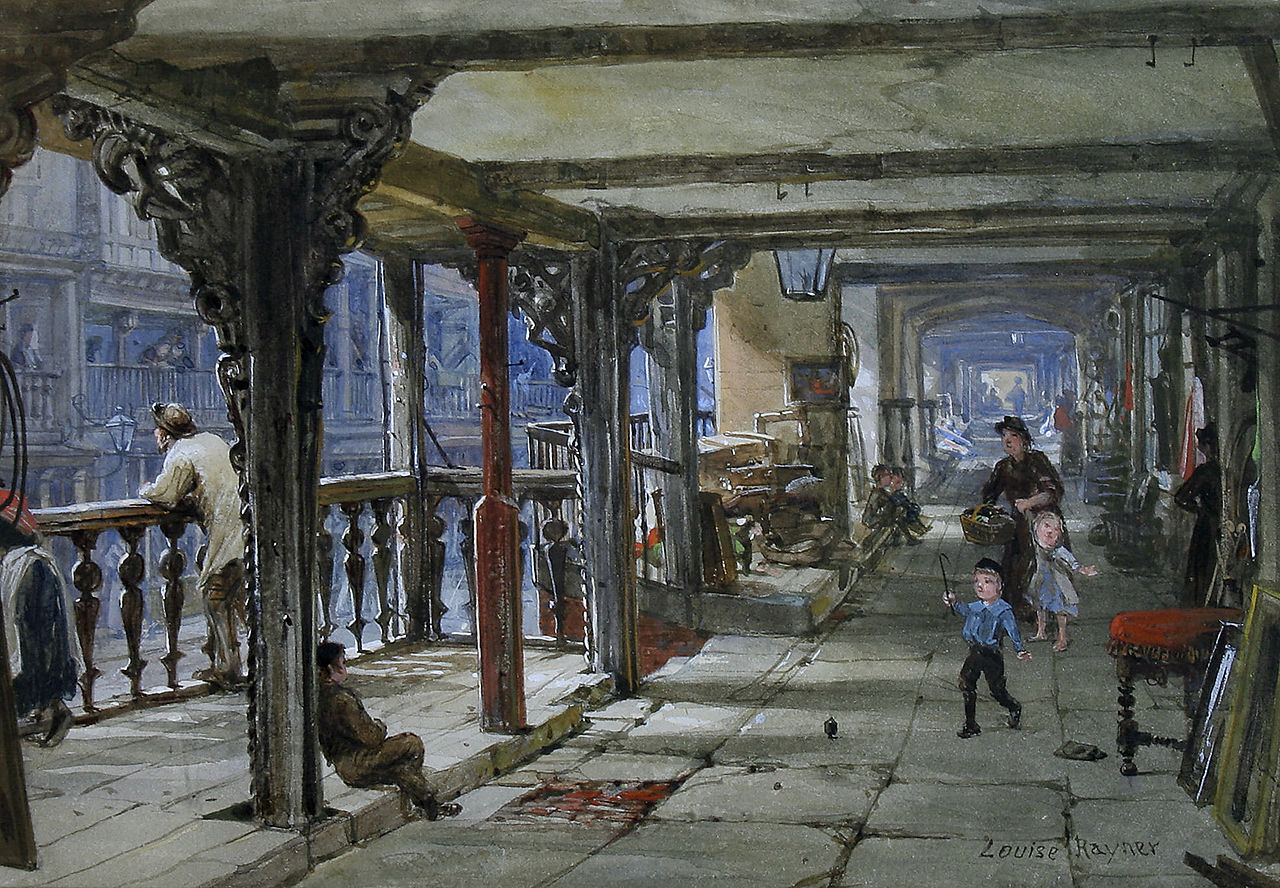Louise Rayner was a British watercolour artist of the Victorian Era.
During the summers of the 1870s and 1880s, she traveled extensively across the UK, painting everyday life as street scenes of towns and cities during the booming Victorian era.
Her paintings show people going about their work, and have a quaint “olde worlde” feel to them.
Under each of Louise Rayner’s paintings, there is a live “Street View” (from Google maps) of the same location depicted in the paintings—you can pan and zoom around the image to get a 360º view.
How have things changed? Let’s take a look.
In her painting of Watergate Street in Chester, we can see that many buildings from Louise Rayner’s day still exist today. You can even “walk” down the street in the Google Maps “live” image—just follow the arrows. The shop fronts may be modern, but as you look up, you find the original buildings—almost identical to Victorian times. How marvelous—modern commerce co-existing with history.

In her second painting, depicting Fish Street in Shrewsbury, we see a narrow section of street that’s just wide enough for one car to pass through today. The buildings may have changed, but their character remains largely the same.

In the third Louise Rayner painting, showing Church Street in Warwick, there are clearly big changes since the 1880s. This narrow section of Church Street (with the man carrying two baskets), has gone completely—replaced by a wider street at this spot.
Notice the drainage channel running down the center in the painting. Smaller towns like Warwick would still have suffered from poor drainage and sanitation in the 1870s. It was likely that alleyways like this were overcrowded, with inadequate water supply and shared privies. Sewage would have accumulated in cesspools and created a terrible stench, especially in summer.

In her painting of Durham Cathedral, shown towering above the River Wear in the North East of England, we can see cute little cottages and townhouses on the left bank by the bridge. Whilst the bridge remains intact, today, we have a mix of traditional cottages and modern condominiums.
The right bank of the river today features restaurants and a shopping centre—taking advantage of the beautiful view across the river towards the cathedral.

In Louise Rayner’s painting of Eastgate Street, Chester, we see a lot of similarities with how the street looks today. The clock above the bridge has been added since the painting, but take a close look at the building on the right nearest the bridge. Notice the corner turret that was a common feature of Victorian architecture. It indicates how little that building has changed in 130 years.
Chester is a beautiful town with many well-preserved historic buildings.

More of Louise Rayner’s work







